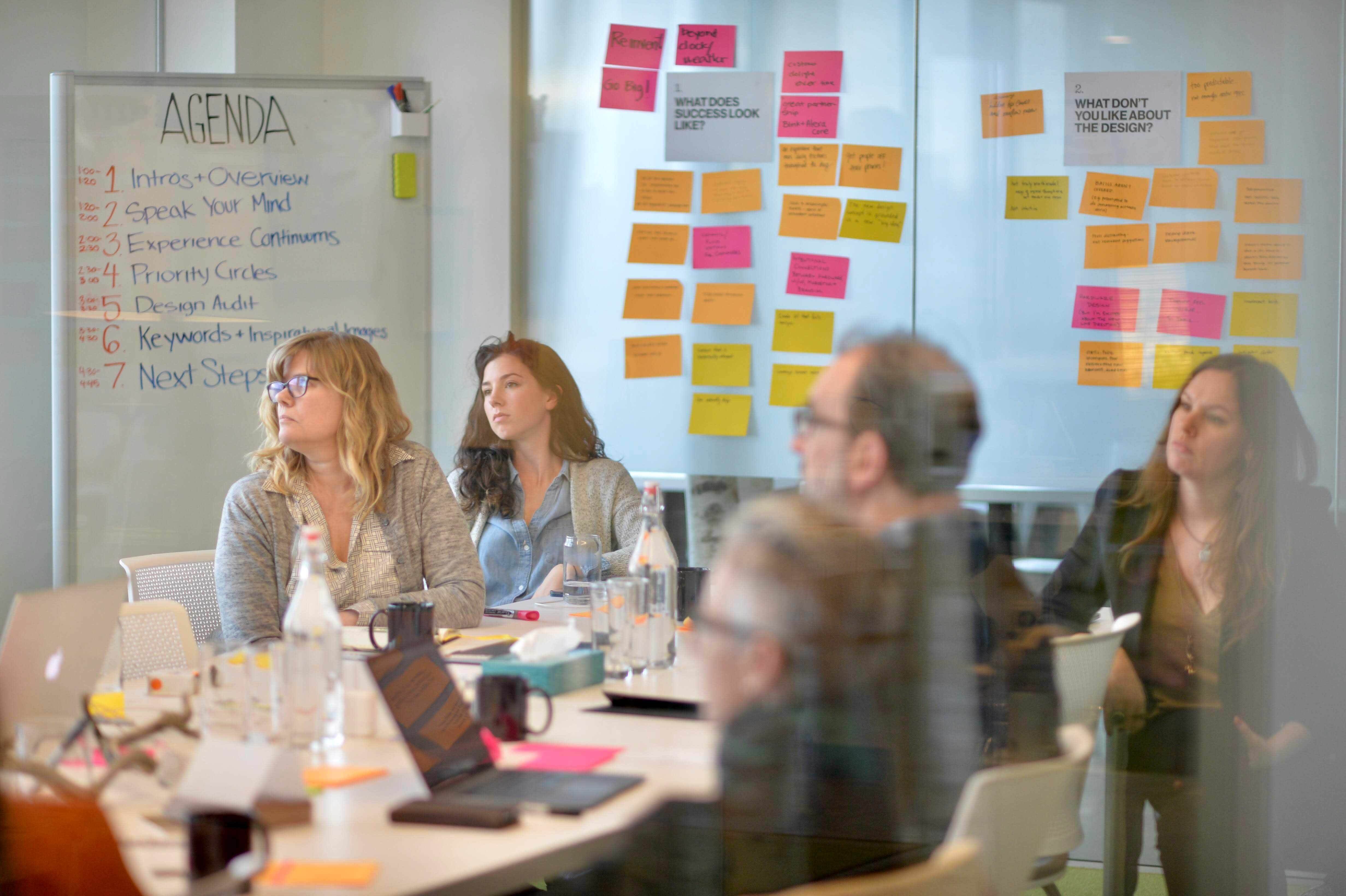
In July 2020, Blink will celebrate 20 years in business as a design agency. So, we’ve worked with a massive range of clients. One thing we have learned is that UX (user experience) design projects are the most successful when everyone — business owners, developers, and visual designers alike — is on the same page about the expectations for engagement. Aspects like locations, communication preferences, user research expectations, and much more can affect the experience and results of your work with professional UX designers. If you’re considering working with a UX or UI (user interface) design company, asking the right questions can set you up for success and show you the advantages of hiring that UI/UX team.
Important questions to ask UX consulting firms
Choosing a professional UI/UX design company is a big decision. Here are some questions you can ask to better understand the benefits of hiring a specific firm.
1. Do you work on-site at our offices or do you work out of your offices?
You likely value close collaboration as much as innovative thinking from a UX firm. Therefore, you will need to understand the design company's preferred model of daily engagement to determine whether that meets your expectations. You can’t assume that the UX consultants will embed in your company and become an inhouse design team.
For example, at Blink, our preference is that our UX teams work out of Blink offices to maintain our culture and provide them the best environment, though exceptions are made depending on the project. When potential clients evaluate us, we need to understand their location expectations and weigh whether we are a good fit for their needs.
Over the past several years, Blink has grown to five nationwide UX studios. To accommodate this growth, we have adopted new technologies to collaborate with our clients and support remote user research. Each of our conference rooms is equipped with HDTV and a high-quality microphone/speaker. The tools in our studios provide our UI/UX designers with all the resources they need to conduct remote UX research and support their product design.
2. How do you prefer to communicate with your clients?
On any project, especially a collaborative one including UX research and design, you need to determine whether your communication expectations align with your UX consulting firm. For example, they may want daily syncs where you prefer to communicate less frequently. You may want to quickly reach them by IM. You may prefer face-to-face meetings for critical conversations. You need to know whether they share the same philosophy.
3. We’re across the country from you. How do you work with distributed teams?
When you don’t have the luxury of easily meeting face-to-face, find out if members of the design team travel to ensure critical meetings like kickoffs or design workshops are conducted in person. Discuss the communication tools they use to keep remote team members in the loop. If your teams span continents, discuss how your company prefers to manage those time zone differences.
Cybersecurity is another concern, as you want to make sure the UX company uses secure communication tools, so important business details stay between you and the design team. Hammering out the details of communication with creative agencies before product design begins can also offer significant improvements for efficiency, saving time and money along the way.
At Blink, we try to be tool agnostic. Our inhouse tools include GSuite, Office 365, Box, Zoom, and Slack, but our UX consultants also rely on client-specific stacks (Microsoft Teams, Amazon Chime, BlueJeans, or Google Hangouts) depending on the project they are supporting.
4. How will your designers work with our developers?
Your development team will ultimately need to consume the designs arising from the user-centered design (UCD) process. You need to understand how the developers will be included in the process. Ideally, the UX/UI design firm invites developers to kickoffs, stakeholder interviews, and design reviews throughout the process so that developers’ ideas and technical constraints are incorporated.
You also need to know how the designs will be handed off. Examples of deliverables are wireframes, a working prototype, digital product design, CSS files, and/or code snippets. The more seamlessly that designers can work with developers means a greater likelihood that designs will get into the finished product. In Agile development, designers often need to work a cycle or two ahead of the developers. Whether or not you use Agile, find out how the UX agency will accommodate your process.
Whenever possible, we prefer to deliver our projects as front-end prototypes built with HTML/CSS/JS. Our experienced UX design team has a passion for good design and an obsession with accessible, performant, search-engine-optimized code. We take the steps necessary to take a collaborative approach to product design that involves all parties.
5. Can we be present in user research interviews?
If you’re eager to talk to representative users or customers (good for you!) but need a UX consulting firm to help, it’s important to clarify how the firm provides the client access to the research participants. You may be given access to the recordings, or you may be invited to participate in interviews or field research.
At Blink, we’ve learned that clients vary in their availability and levels of interest to observe live research sessions. So we provide recordings, transcripts, and highlight reels to help support our insights and recommendations.
While many of our clients participate in field studies — after the researcher lays ground rules — in our usability tests, only the moderator is in the room with users, and we stream the session to the clients. That may differ from other UX consulting firms’ policies, but the important part is to discuss the role of the clients in user research sessions and exactly what deliverables you’ll receive as a part of the engagement. For instance, if you want to get information back on certain features or specific use cases, communicating with the UX researchers is key.
6. How do you incorporate technical and business requirements into your designs?
A UX design company will likely take a user-centered approach to your project. All members of the design process — from web designers and Wordpress developers to mobile app developers and visual designers — will direct the software development toward the user experience. However, business requirements and technical requirements should be incorporated into any design and development. Find out what points in their process incorporate these requirements. Discuss ways that the designs can be checked against these requirements, such as reviews with technical architects or product executives.
At Blink, we are very flexible in terms of how we receive those requirements, but we prefer to receive them early and revisit them as often as necessary to ensure each project we complete achieves its goals. Identifying limitations and business needs early helps our UX designers work around them and incorporate them into the product.
7. Have you worked on projects like mine?
A lot of factors determine the complexity of a user-centered research and design project: domain, difficulty recruiting representative users, the extent of platforms to be designed for (e.g., mobile app, desktop, voice UI), the number of stakeholders, etc. Ask your UX hire to share its experience relevant to your project. While we believe the UCD research and design toolbox is suitable for a vast number of problem spaces, design constraints, form factors, product goals, or interaction design, the valuable lessons learned from experience smooth the design process.
Remember, Blink's been around for almost 20 years. We've seen a wide variety of businesses and software development requests come through our doors. You may need internal product design or are looking to improve your sales process with a mobile app. Or maybe you want to add compatibility with an artificial intelligence (AI) program. Chances are, we've seen it before. Talk with your UI/UX design service providers and see how they can bring that experience to the table.
What questions do you have for us?
These questions are a good starting point to finding the right UX design agency. They can tell you all about the UX agency you're looking to hire and provide information on their communication habits, research practices and more. If you are interested in learning more about Blink and the UX design services we offer, then check out our expansive portfolio of clients, or drop us a note at [email protected].



